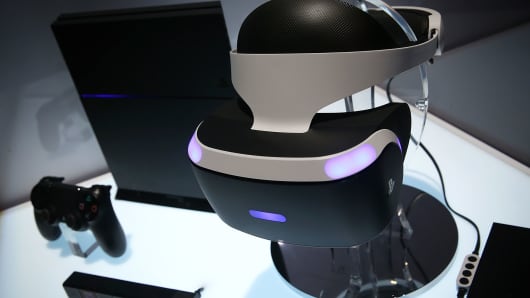I've been lucky enough to try out Sony's new virtual reality (VR) headset this month for its Playstation 4 video game console.
This was the first time I had experienced VR since the mid-1990s with the days of the mega-arcades in London's Trocadero entertainment complex (now sadly defunct). This new generation of an old concept managed to blow my mind. But it also managed to turn my stomach.
On the whole it was a largely positive experience. Games like "London Heist", "Danger Ball", "Ocean Descent" and "Until Dawn: Rush of Blood" are a genuinely thrilling experience and hint at a world of possibilities for the new format.
Another high point was a VR cinema application called "Littlstar" which allowed me to check out 360-degree films, newsreels and documentaries. One minute I could be in amongst Donald Trump supporters at a rally in Bedford, New Hampshire. The next minute I could be staring at ruins in Syria's war torn city of Aleppo.
More notable moments included watching the beautifully animated virtual reality story entitled "Allumette". Then there was the brief but deeply unsettling "Resident Evil" demo called "The Kitchen." Despite being only a few minutes in duration, it was scary enough for me - a 35-year old man - to start screaming and rip the VR goggles off my head.




